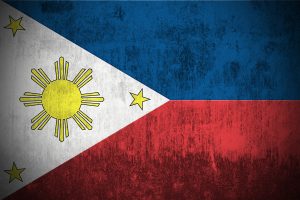The Philippine Coast Guard (PCG) plans to bolster its patrols in the South China Sea amid a continuing rash of Chinese deployments in areas of the waterway claimed by Manila.
In an interview with Reuters published yesterday, PCG chief Admiral Artemio Abu said that his force would deploy additional vessels and conduct more sorties and overflights of these areas in a bid to protect the nation’s maritime territory.
“We are strengthening our presence,” Abu told the news agency. “At a moment’s notice, the coast guard vessels will be there because they are exclusively and primarily dedicated for that purpose.”
He said that the aim was also to ensure that Filipino fishermen operate without harassment in the West Philippine Sea, as Manila refers to its portion of the South China Sea, after a string of incidents in which Chinese vessels have chased fishing boats away from disputed areas. In the interview, Abu said, “We’re making sure that the presence of coast guard vessels is felt by the fishermen in the area.”
On January 20, PCG reported that a Filipino fishing boat had been forced by China’s coast guard to leave the Second Thomas Shoal, known locally as Ayungin Shoal, a submerged reef inside the Philippines’ Exclusive Economic Zone (EEZ). The force said that it “immediately” deployed additional PCG vessels to “protect the interest and ensure the safety of Filipino fishermen who conduct fishing operations in the said vicinity waters as their source of livelihood.”
This was one of scores of Chinese incursions into the Philippines’ EEZ in recent years. Under its contentious “nine-dash line” maritime claim, which includes nearly the entire South China Sea, the Chinese government says it has sovereignty over a large swathe of Philippine-claimed waters, and Chinese vessels have encroached repeatedly into the country’s EEZ. In November 2021, three Chinese coast guard vessels reportedly fired high-pressure water cannons at Philippine boats seeking to resupply Philippine troops stationed in the Sierra Madre, a rusted World War II-era warship that is grounded at Second Thomas Shoal. The Philippine navy grounded the vessel in 1999 to reinforce the Philippine claim to the feature.
During the administration of President Rodrigo Duterte, who took a broadly warm relationship with China, the Philippines lodged 388 protests about Chinese incursions into Philippine waters. The pace has only increased so far under President Ferdinand Marcos Jr., who has vowed to uphold the 2016 arbitral award that ruled China’s claims have no basis in international law. During the first 70 days of Marcos Jr.’s term, the Philippines lodged nearly one protest per day against Beijing’s “incursions” and “illegal presence” in disputed waters.
While the Philippines cannot match China’s gargantuan coast guard, let alone the People’s Liberation Army Navy, its position has been bolstered by the rapid warming of relations with the United States under President Marcos.
Last week, the two sides agreed to grant the U.S. military access to four additional bases under the Enhanced Defense Cooperation Agreement (EDCA), bringing to the total number of military facilities that will host a U.S. presence to nine. Signed in 2014, EDCA, an extension of the Mutual Defense Treaty signed in 1951, permits U.S. forces to operate from facilities within Philippine military bases.

































